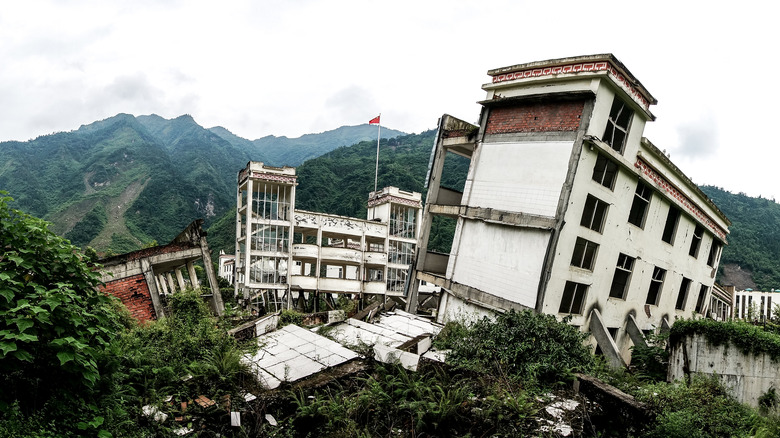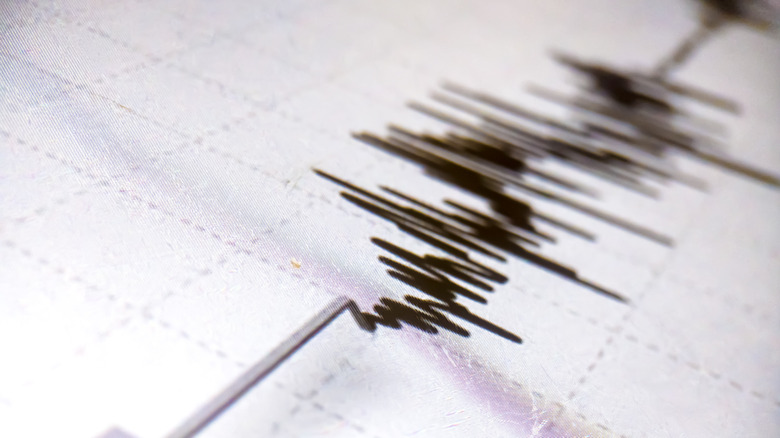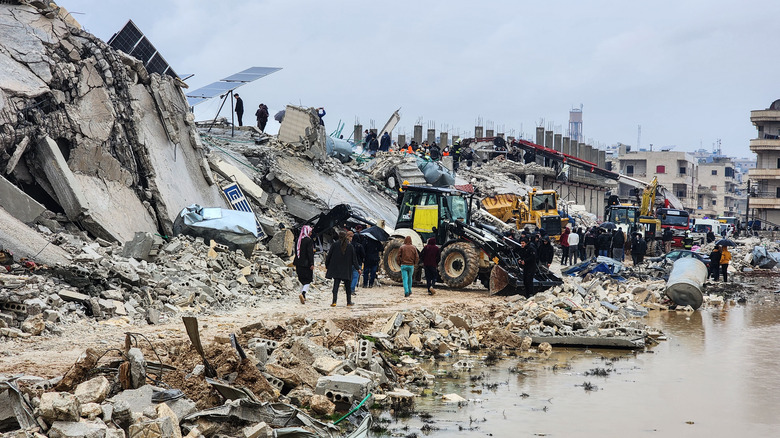Earthquakes: What Do The Different Richter Scale Magnitudes Mean?
Usually, when people think of earthquakes, images of devastating natural disasters that destroy buildings, toppled cities, and damage communities come to mind. However, this isn't always the case. Millions of earthquakes occur across the globe that people don't feel daily but still show up on the Richter scale, according to Michigan Tech University.
Seismologists, or people who study vibrations in Earth's crust, use various tools to measure earthquakes and categorize them by severity. Due to the tectonic plates that are constantly moving Earth's crust (and subsequently, the continents and other landmasses), when these plates collide with each other, they eventually lose loose rock and slide over one another, causing earthquakes on the way. The energy that is created by this sliding motion is what seismologists study (via Michigan Tech University). In the 1930s, Charles Richter, an American seismologist, devised a system to measure earthquakes by their amplitude, which was named the Richter scale, according to U.S. Geological Survey (USGS).
History of the Richter Scale
Seismologists calculate the Richter scale by looking at a seismograph that measures the amplitude of the earthquake and the distance from which the earthquake was recorded, states USGS. It was originally used to measure California earthquakes but is outdated compared to modern forms of measurement. However, it is still popularly used when describing the severity of earthquakes. The scale can theoretically reach any point but usually starts at around 2 to 2.5, according to Michigan Tech University.
The most severe earthquake (but not the deadliest) ever recorded was approximately 9.4 to 9.6 on the Richter scale, according to The Business Standard. This earthquake occurred in 1960 in Valdivia, Chile, amassing a total of 1,655 deaths. The deadliest earthquake happened in 2004 when a 9.1 to 9.3 earthquake killed more than 200,000 people in Indonesia (via The Business Standard). Earthquakes like these are considered extremely rare and may only happen once or twice a year (via Michigan Tech University).
Modern measurement systems
Today, the Moment Magnitude scale is used by modern seismologists. This can also be turned into a formula, first by measuring the moment. The moment is measured by multiplying rigidity, area, and the slip of the tectonic plates. Per USGS, seismologists take this variable and plug it into a new equation: Moment Magnitude (MW) = 2/3 log10(MO) – 9.1. This helps scientists get a more accurate depiction of an earthquake while also keeping it similar to the Richter scale.
CNN states that the earthquake in Turkey and Syria in February 2023, measured a 7.8 magnitude at its epicenter and resulted in approximately 4,300 deaths. An earthquake of this strength has not hit Turkey since 1939 (per CNN). Many buildings were destroyed, and both countries deployed resources to help survivors and locate missing persons. The destructiveness of this earthquake will most likely have ramifications that will be felt for years, hopefully having a smooth recovery along the way.


